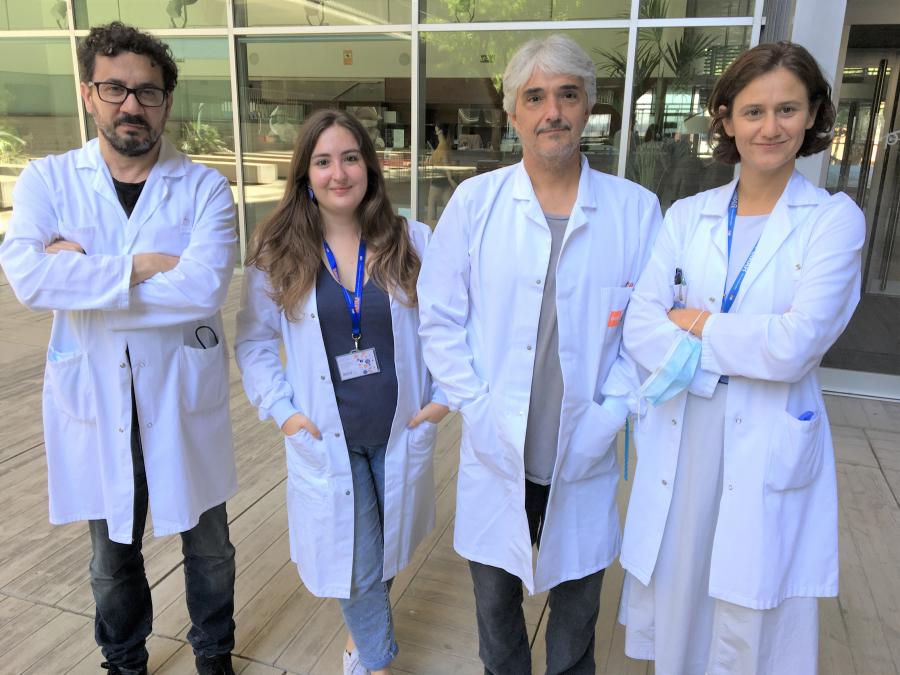

Fernando Gallardo, Josune Alonso, Lluís Espinosa, Mar Iglesias
Combining chemotherapy and BRAF oncogene inhibitors is a very effective strategy for fighting metastatic melanoma, the leading cause of death from skin cancer in the world. This has been demonstrated in a study by researchers from the Hospital del Mar Medical Research Institute (IMIM), Hospital del Mar, and CIBER Cancer (CIBERONC), in collaboration with the Bellvitge Medical Research Institute (ICO-IDIBELL), which has just been published in the journal Oncogene.
The study, which involved the IMIM's Stem Cells and Cancer Research Group and doctors from the Dermatology and Pathology Departments at Hospital del Mar, analysed what effect combining the two types of treatment had on malignant melanoma. In previous studies, the same researchers had already demonstrated the usefulness of blocking BRAF oncogene expression to reduce the ability of colon and rectal cancer cells to repair after chemotherapy treatment.
Low-toxicity treatment
The researchers tested the two treatments both separately and together in mice and in tumour cells in vitro. The combination of the two approaches proved to be superior in all trials after one week of treatment. Furthermore, the benefits were maintained after the end of treatment. "We have demonstrated the therapeutic potential of combining the two treatments to eradicate cancer cells. This strategy not only prevents the appearance of resistance to one of the approaches, but also offers a new therapeutic perspective for patients with mutations affecting the BRAF oncogene", explains Dr. Lluís Espinosa, a researcher at the IMIM-Hospital del Mar and CIBERONC, and author of the study.
The study also indicates that chemotherapy administered at low doses, thereby avoiding its toxicity, combined with the standard treatment with BRAF inhibitors, can have an enormous effect on the progression of metastatic melanoma. Furthermore, because the combined treatment eliminates tumour cells rather than stopping their growth, it would also avoid lengthy treatments and the possible development of resistance. The researchers also believe that this approach could be applied to other types of cancer, including some rare subtypes of melanoma that are currently untreatable as they lack mutations in the BRAF oncogene. The authors of the study believe that this possibility is easily assessed, as the treatments already exist and are being used routinely for several types of tumours.
In this case: "The mechanism is simple: by combining low-dose chemotherapy, which has very low toxicity, with BRAF inhibitors, we damage the cell's DNA with the chemotherapy while at the same time we prevent the cell from repairing itself thanks to the BRAF inhibitors. This not only enhances the effect of each of the treatments, but it might make the effect irreversible", comments Dr. Fernando Gallardo, head of the dermatology department and author of the study. One of the main problems encountered with BRAF inhibitor treatment, the gold standard approach to this disease, is that the cancer cells re-grow and become resistant to this therapy, as the inhibitor only stops them, and does not eliminate them. The possibility of using this in combination with chemotherapy could eliminate the problem of certain resistance and relapse.
Reference article
Alonso-Marañón J, Villanueva A, Piulats JM, Martínez-Iniesta M, Solé L, Martín-Liberal J, Segura S, Pujol RM, Iglesias M, Bigas A, Gallardo F, Espinosa L. Combination of chemotherapy with BRAF inhibitors results in effective eradication of malignant melanoma by preventing ATM-dependent DNA repair. Oncogene. 2021 Jun 17. doi: 10.1038/s41388-021-01879-2. Epub ahead of print. PMID: 34140639.
Servei de Comunicació:
Marta Calsina Freixas(ELIMINAR)
Tel:
(+34) 93 316 06 80
Doctor Aiguader, 88
08226 Barcelona
© Institut Hospital del Mar
d'Investigacions MèdiquesLegal Notice and Privacy Policy | Cookie Policy | Site Index | Accessibility | Find Us | Contact